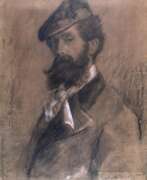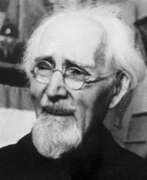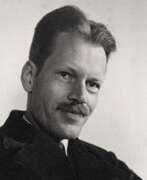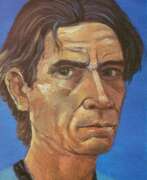Monumentalists Self-portrait
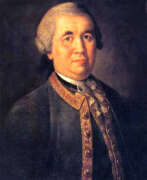

Alexei Petrovich Antropov (Russian: Алексей Петрович Антропов), a prominent Russian painter of the Baroque period, is celebrated for his significant contributions to art, particularly in portrait painting and church frescoing. Born into a family connected to the governmental sphere, Antropov's early exposure to the arts came through his work in the Chancellory of Buildings, where he began his career under the guidance of various Russian and foreign artists, including Andrey Matveyev and Ivan Vishnyakov.
Antropov's work is distinguished by his mastery in oil painting, miniatures, and icons, with a career that saw him active mainly in St. Petersburg, Moscow, and Kiev. His artistic journey was notably influenced by his studies with the French court painter Louis Caravaque and later with the Italian painter Pietro Rotari, which helped him refine his portrait artistry. The 1760s emerged as his most productive period, where he crafted numerous notable portraits, including those of Elizabeth Petrovna and Peter III of Russia, showcasing his preference for traditional icon and parsuna portrait styles characterized by sharp contrasts and dark backgrounds.
Antropov's legacy extends beyond his artworks; his dedication to art education and the community is evident in his decision to transfer his only house to the Department of Education for the establishment of a Free School. He passed away in 1795, leaving behind a rich collection of works that continue to be celebrated in museums such as the Tretyakov Gallery in Moscow and the Russian Museum in St. Petersburg.
Collectors and art experts value Antropov for his unique contributions to Russian art, his role in the transition of portrait styles, and his influence on future generations of artists, including his apprentice Dmitry Levitzky. His works, including the portraits of Catherine II and Archbishop Gavriil Petrov, are pivotal in understanding the artistic and cultural shifts of 18th-century Russia.
For those interested in exploring the depths of Russian Baroque art and the significant figures who shaped its contours, Alexei Petrovich Antropov's oeuvre offers a fascinating journey. Collectors and aficionados are encouraged to sign up for updates on new product sales and auction events related to Antropov's works, ensuring they remain informed about opportunities to own a piece of this illustrious artist's legacy. This subscription is a gateway to the vibrant world of art collection, where the beauty of the past is preserved for the future.
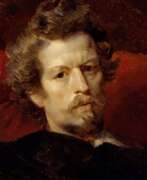

Karl Pavlovich Bryullov (Russian: Карл Па́влович Брюлло́в), a distinguished Russian artist, emerged as a pivotal figure in the world of 19th-century art, blending Western European Romanticism with his Russian heritage to create works that continue to captivate audiences today. His mastery in painting and architecture set him apart, making him a celebrated figure not just in Russia, but across Europe.
Bryullov's acclaim primarily stems from his remarkable ability to infuse his paintings with vibrant life and emotion, a testament to his profound understanding of human expression and the dramatic interplay of light and shadow. His most famous work, "The Last Day of Pompeii," exemplifies this skill, showcasing an epic narrative filled with vivid detail and emotional depth. This masterpiece, which is housed in the State Russian Museum in St. Petersburg, has garnered international praise for its innovative approach to historical painting, merging accuracy with dramatic storytelling.
Beyond "The Last Day of Pompeii," Bryullov's portfolio includes a range of subjects, from majestic portraits to serene landscapes, each bearing his signature blend of realism and romanticism. His works are featured in prestigious galleries worldwide, serving as a testament to his enduring influence on the art world. For collectors and experts in art and antiques, Bryullov's oeuvre offers a fascinating glimpse into the evolution of 19th-century European painting, marked by a unique intersection of culture, art, and history.
For those intrigued by the enduring legacy of Karl Pavlovich Bryullov and his contributions to painting and sculpture, we invite you to sign up for updates. Our subscription service provides exclusive alerts on new product sales and auction events related to this illustrious artist, ensuring that enthusiasts and collectors alike stay informed about opportunities to engage with Bryullov's remarkable works.


Oswaldo Guayasamín is an Ecuadorian painter, muralist and sculptor.
Oswaldo's father was an Indian, and the family was very poor, but the future artist was educated at the School of Fine Arts of Quito. Soon, literally in two years, he created a cycle of 103 paintings dedicated to the life of oppressed Indians in Latin America. Oswaldo Guayasamin also painted portraits of famous contemporaries, including Fidel Castro, whom he admired. He also created murals, frescoes, landscapes, and symbolic images.
The artist's works were exhibited in Paris, Moscow and in Leningrad, among other cities around the world, with amazing success. In 1957, at the Fourth Biennial in São Paulo, he was named the best South American artist.
Guayasamin was also a passionate collector. In 1978, the then famous artist donated to the State of Ecuador some 500 colonial paintings and sculptures, pre-Columbian archaeological sites, Goya and Picasso paintings that he had collected.
